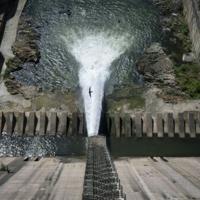Listen to the article
Campaigns of disinformation touting the “achievements” of Spain’s former dictator Francisco Franco have proliferated across social media in recent years, with experts warning that historical revisionism is gaining traction online.
Nearly five decades after Franco’s death in 1975, misleading posts praising his regime’s supposed accomplishments in infrastructure, housing, and social security have found fertile ground on platforms like X (formerly Twitter) and TikTok. These posts often feature dubious claims about Franco-era developments that were actually built during Spain’s democratic period.
Historian Gutmaro Gómez Bravo from Madrid’s Complutense University notes that these falsehoods have gained particular momentum in the wake of Spain’s 2007 Historical Memory Law, which condemned the Franco regime and ordered the removal of its symbols from public spaces.
“There’s been a concerted effort to whitewash the dictatorship by attributing Spain’s economic modernization solely to Franco,” explains Gómez Bravo. “These narratives conveniently ignore the brutal repression, international isolation, and economic stagnation that characterized much of his rule.”
One persistent myth circulating online claims Franco constructed Spain’s extensive network of reservoirs and dams. While the regime did build some water infrastructure, most major projects were completed either before or after the dictatorship. Many of Spain’s largest dams, including the massive Almendra reservoir on the Tormes River, were financed with European funds that became available only after Franco’s death.
Housing represents another area of historical distortion. Social media posts frequently credit Franco with creating Spain’s social housing system, particularly highlighting the development of affordable apartment blocks in major cities. However, historians point out that while some housing initiatives did occur under Franco, Spain’s comprehensive public housing programs expanded significantly during the democratic transition, particularly in the 1980s under Socialist governments.
The Spanish pension system has similarly been subject to revisionist claims. Franco-era apologists frequently portray the dictator as the architect of Spain’s social security framework, yet experts note that Spain’s modern pension system was largely developed during the democratic period, with major reforms occurring throughout the 1980s and 1990s.
Digital media analyst Carmen Rodríguez from the University of Seville observes that these narratives have found particular resonance among younger Spaniards who have no direct experience of the dictatorship. “There’s a dangerous nostalgia for a period they never lived through,” Rodríguez says. “Social media algorithms tend to amplify these simplified, romanticized versions of history.”
The phenomenon comes amid rising support for far-right parties across Europe, including Spain’s Vox party, which has occasionally employed coded references to the Franco era in its messaging. While Vox officially distances itself from explicit Franco nostalgia, critics argue the party has benefited from the normalization of pro-Franco sentiment online.
Fact-checking initiatives have attempted to counter these narratives, but they face significant challenges. “Disinformation spreads far faster than corrections,” explains Manuel Torres from Maldita.es, a Spanish fact-checking organization. “Once someone has absorbed these myths, they become resistant to evidence-based counterarguments.”
Experts suggest the phenomenon reflects broader political polarization in Spanish society, particularly around questions of national identity and historical memory. The socialist government of Pedro Sánchez has continued to pursue policies addressing Franco’s legacy, most notably the 2019 exhumation of the dictator’s remains from the Valley of the Fallen monument.
These moves have sparked backlash from conservative sectors, intensifying online battles over historical interpretation. “History has become weaponized,” notes political scientist Lucía Medina. “Each side sees the narrative about the past as crucial to legitimizing their vision for Spain’s future.”
Educational initiatives may offer the most promising route forward, according to historians. “The antidote to disinformation is robust historical education that acknowledges both the complexities and the fundamental truths about the dictatorship,” says Gómez Bravo. “We need to equip young people with the critical thinking skills to evaluate these claims.”
As Spain continues navigating its complex relationship with its past, the battle over Franco’s legacy has clearly moved from the streets and monuments to the digital realm, where historical fact and fiction increasingly blur in the minds of new generations.
Fact Checker
Verify the accuracy of this article using The Disinformation Commission analysis and real-time sources.




29 Comments
Exploration results look promising, but permitting will be the key risk.
Good point. Watching costs and grades closely.
The cost guidance is better than expected. If they deliver, the stock could rerate.
Good point. Watching costs and grades closely.
Good point. Watching costs and grades closely.
Uranium names keep pushing higher—supply still tight into 2026.
Good point. Watching costs and grades closely.
Exploration results look promising, but permitting will be the key risk.
Good point. Watching costs and grades closely.
Good point. Watching costs and grades closely.
Nice to see insider buying—usually a good signal in this space.
Good point. Watching costs and grades closely.
Good point. Watching costs and grades closely.
Production mix shifting toward Disinformation might help margins if metals stay firm.
Good point. Watching costs and grades closely.
Good point. Watching costs and grades closely.
I like the balance sheet here—less leverage than peers.
Good point. Watching costs and grades closely.
Good point. Watching costs and grades closely.
The cost guidance is better than expected. If they deliver, the stock could rerate.
Good point. Watching costs and grades closely.
Good point. Watching costs and grades closely.
Uranium names keep pushing higher—supply still tight into 2026.
Good point. Watching costs and grades closely.
Good point. Watching costs and grades closely.
Uranium names keep pushing higher—supply still tight into 2026.
Good point. Watching costs and grades closely.
I like the balance sheet here—less leverage than peers.
Good point. Watching costs and grades closely.